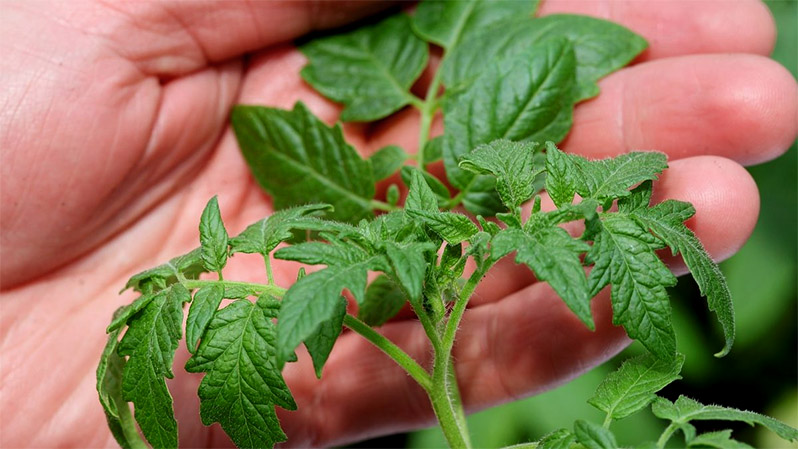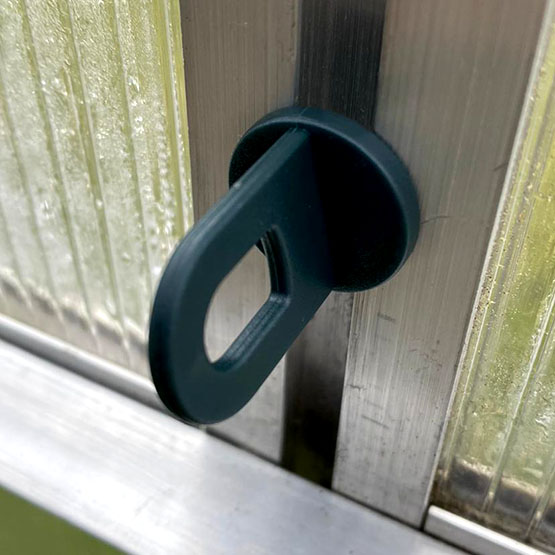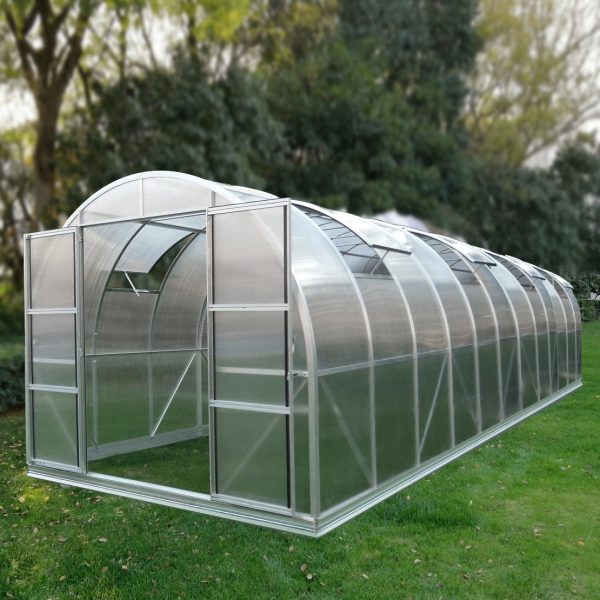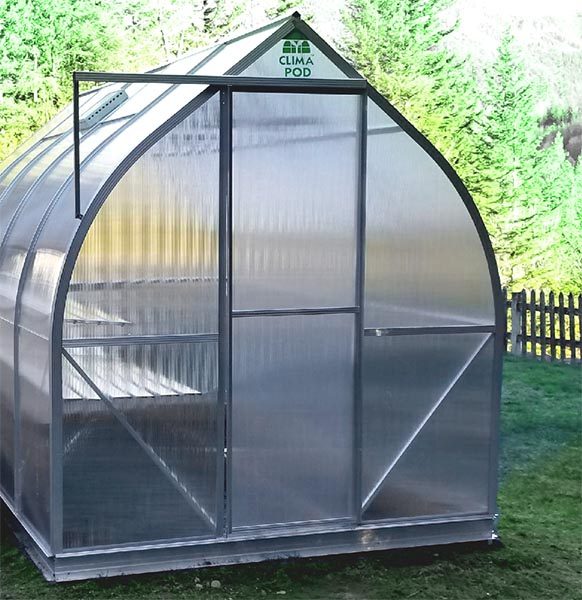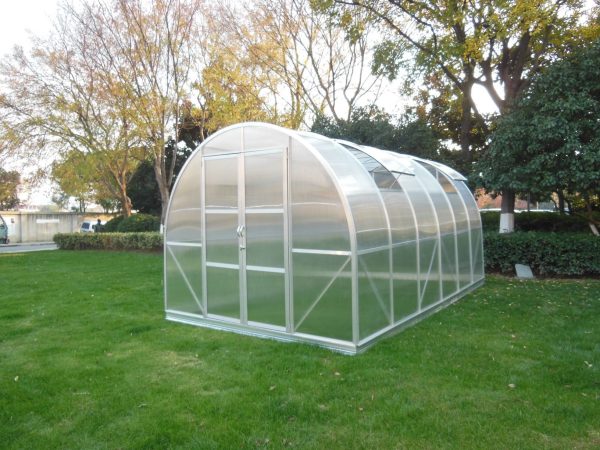Very often the main difficulty in sprouting vegetables is that tomato seedlings do not grow in a greenhouse. How to deal with it? What should you do to save seedlings? You can find answers to these and other questions by reading the material collected here.
Almost every gardener grows tomatoes. This culture of vegetables is valued for its high taste properties and benefits for the body. Those who have been planting tomatoes for more than a year know what conditions and care are necessary for a good result. But beginners often face a lot of problems on their way.
A few words about the health benefits of tomatoes
South America is considered to be the birthplace of this vegetable. To this day, many wild tomato species have survived in those places.
Due to its many useful qualities, this culture is considered one of the most beneficial for the human body. The vegetable contains a wide variety of vitamins and minerals:
- Folic acid;
- Nicotinic acid;
- Starch;
- Elements of iron and iodine;
- Vitamins of groups B and C and others.
However, among all these elements, lycopene has the greatest benefit. This antioxidant is actively involved in the destruction of cancer cells. It is because of the presence of this substance in tomatoes that they have a red color.
Tomato growing tips
For an earlier harvest of tomatoes, growing with seedlings is suitable.
Of course, the easiest way is to buy ready-made seedlings and immediately plant them on your site. However, in this case, you cannot be sure of the correct germination of seeds and the variety of your plants. Therefore, it is better to make a little effort and grow tomato seedlings yourself in a greenhouse.
Selection and disinfection of seeds
Before you start sowing seeds, you need to choose only those that are large in size and healthy in appearance. They should be brown. Then the selected seeds should be disinfected. To do this, you can try one of the suggested methods:
- Aloe juice solution. Tomato seeds must be placed in a mixture of aloe juice and water. Mix them in a ratio of 1:1, put the seeds in it and leave it for 24 hours.
- Treatment with 2-3% peroxide. For this method, preheat hydrogen peroxide to 40 degrees Celsius. Then pour the seeds into it. Leave to stand for 10 minutes.
Attention! After completing this procedure, you should not wash the seeds. Better drain all the water and put your seeds on a dry towel to dry.
Soaking seeds before planting
To soak the tomato seeds, you will need clean gauze. Gently pour the seeds into it, collect in the form of a bag, and then place in a bowl of warm water. It is very important that the water is at room temperature, and the liquid volume does not exceed 80%.
Important! You should not soak the seeds for too long. Maximum 12 hours. You should renew the soaking water every three to four hours. Periodically remove the bag of seeds so that they are enriched with oxygen.
Planting seeds in the ground
After all the procedures have been completed, you can start planting seeds in the ground. Before landing, you should prepare everything you need:
- several pots or boxes (but not small ones);
- soil enriched with useful minerals;
- tomato seeds.
Fill all pots or boxes evenly with soil. Pour them with plenty of water. Make small holes in the soil (a depth of 1 centimeter is enough) and put a couple of grains in them. After that, pour a small layer of soil on top.
Now you should put the future seedlings in a well-lit room suitable for them. Sprouted seedlings are conveniently watered with a spray bottle.
Experts sometimes advise putting a lamp on near the pots.
The air temperature for optimal growth of tomato seedlings should be about 23 degrees. You will be able to transplant the seedlings into the soil in 1.5–2 months.
Tomato seedlings do not grow
Those who first encounter growing tomatoes often wonder why seedlings do not grow well? In some cases, seedlings may grow poorly or not grow at all. For what reasons does tomato seedlings grow poorly, and what measures should be taken?
After the seedlings are transplanted into open soil, they require special and careful care and constant watering. Seedlings may develop poorly for the following reasons:
- Poor seed quality. It is not advisable to use seeds with a very long shelf life for planting. In addition, the lack of sorting or disinfection of the material could have affected.
- Poor quality soil. Another reason why seedlings develop slowly. Everything is simple here – the seeds were planted in the wrong soil for them. Poor soil is a source of diseases and parasites that harm tomatoes.
- Insufficient lighting and temperature. Tomatoes are plants that are very fond of the sun and warmth. If any factor is lacking, plant growth can be greatly slowed down or stopped altogether. Therefore, you should carefully monitor the temperature in the room and, if necessary, use artificial lighting.
- Too much or too little moisture. Success in tomato germination directly depends on proper watering. The formation of strong moisture or drying of the soil in seedlings is unacceptable. If you do not adhere to this condition, this culture grows very slowly.
- Substance deficiency. The root system is not getting the required items. The most common reason why tomatoes do not grow. For this reason, the growth of seedlings is greatly slowed down. To grow healthy plants, it is advisable to add fertilizer to the soil from time to time.
- If you do not grow tomatoes in a greenhouse, pay attention to the humidity and temperature inside it. Usually these are the most common causes of poor development of tomatoes.
How you can help tomato seedlings to grow well
To help seedlings that have stopped growing, you need to act immediately. Otherwise, there is a risk that weak seedlings will simply die.
So, you can improve the health of a developing seedling by following these tips:
- If tomato seedlings have stopped growing, you can use growth stimulants. Experienced gardeners use sodium humate. You need to water at the rate of one glass for one plant;
- If the stems and leaves of the seedlings have become pale green, it is worth fertilizing the soil. At the end of feeding, remove the seedlings to a room with a constant temperature of about 10 degrees. Do not water until growth stuns. After recovery, return to the room where she stood;
- Supplementation with nutrients. Often seedlings develop poorly due to a lack of useful elements. From a lack of nitrogen, yellowing appears on the leaves, and the root system and stems become frail and thin. To meet the needs of plants, you can use urea as a top dressing. Feed at the rate of one tablespoon per ten liters of water;
- Feeding with phosphorus. If purple-red spots appear on the leaves, then the plant needs phosphorus. This element is required so that the seedlings do not stop growing and have good roots. To restore the normal development of tomato seedlings, it is necessary to fertilize with a special phosphorus fertilizer.
- Proper watering. It should be watered moderately and regularly.
Now you know why tomato seedlings sometimes do not grow and what needs to be done!

